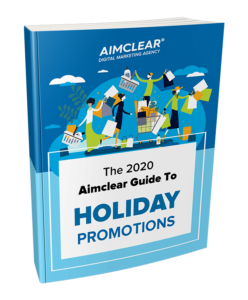Integrated Marketing & Creative Fundamentals
The push towards brands “being everywhere” has been building for years. While the
sentiment has merit, it can also create some potential headaches, especially during the holiday shopping season.
Integrated marketing can build authority and brand awareness, but it largely comes down to users feeling like
they’re seeing you everywhere.
Being visible on multiple channels isn’t going to do much for your business if your creative is
inconsistent.
If you’re running ads on multiple channels, but using a variety of different ad
messaging and design elements, you’re not going to get the results or perceived status of being ubiquitous that
you’re seeking. In extreme cases, users may even think you’re two or even three completely different
companies!
Your native ads, display ads and social ads need to touch on the same themes and styles
for consistency in your campaigns. The key to solving for this is by starting with a couple assets every business
should have (and yet many don’t) – a Style Guide (or Brand Standards Manual), and a Media Library.
Creating A “Brand Bible”
A Style Guide/Brand Standards Manual is basically the “bible” that outlines exactly how
your brand should be visually represented. It’s the cornerstone of creating a consistent, recognizable
brand.
An effective Brand Standards Manual will usually include:
- A word or two on your values, and the essence of the
brand that should consistently be communicated in your marketing - Specifics on how your logo should be treated for
various applications - Specifics on using images, icons, symbols, and brand
drivers in your marketing - The exact CMYK/RGB and Pantone color values to be used
in all marketing - A breakdown of the approved fonts, and the spacing and
kerning of how those fonts are treated
With this information, your in-house teams and vendors will always have everything they
need to replicate your brand style for any application, from black and white embroidered hats to full-sized, full
color billboards, and beyond.
Whether you’re working with in-house teams or multiple vendors, this consistency can make a dramatic impact on the
effectiveness of your integrated marketing efforts.
Creating A Media Library
This is a shared folder that lives somewhere in the cloud (on a server or service like
Box, Dropbox, Google Drive, Microsoft OneDrive, etc.) that contains all your approved marketing assets. You’ll use
it to store all the approved files your in-house teams and vendors need to execute your holiday creatives.
Storing these assets in the cloud (instead of on your hard-drive, or scattered across
several different employees’ computers) provides a safety layer of backups, and also allows you to control
permissions on each folder or asset, so you can share certain elements with certain vendors while still ensuring
consistency.
Your Media Library might include:
- Approved headlines and ad copy
- Approved full color, two color, black and white, and
reverse files for your logo and brand drivers (icons, symbols, etc. etc.) - Vector (.AI or .EPS) files so your logos can be
reproduced at any resolution. - Approved holiday campaign-related images, product
images, and other assets - Templates for ad creatives and social posts
- Any other elements you want consistently used in your
marketing
Split Testing
We split test (or
A/B
test) just about everything – and you should as well.
Split testing is basically taking one version of your marketing and testing it against another, different version;
then crunching the numbers, and seeing which version works better.
This allows you to improve your marketing on an ongoing, iterative basis. Today’s
generation of marketing and tracking tools make it a breeze to constantly test, track, and tweak.
- You can split test almost every aspect of your
marketing, from your ads to your email follow-up sequences, promotions, product pages, and sales
letters - You can test different price-points for your
products - You can test different headlines, email subject lines,
button colors, and call to actions - You can even test completely different layouts
Make sure you’re testing. Even small changes in your numbers can mean a dramatic
difference to your bottom line!
Holiday Campaign tips from our Ad Operations Team
As we mentioned at the outset, this guide focuses specifically on the creative side of
holiday promotions: campaign ideas, messaging strategy, ad creative, and landing pages.
Obviously, there’s a whole other side to your campaigns that is just as important, and
that’s the client services/paid media side. The ad operations team
creates your campaigns. They manage your budgets and watch the numbers. None of what we’ve been discussing happens
without them.
- Be ready to move fast and adjust on the fly. Advertising costs in Q4 typically go through the roof.
You need to increase transaction values to offset these high costs and make
your sales actually profitable. Flat holiday AOV is likely the result of increased competition for holiday
shoppers, and bargain shoppers taking advantage of deep discounts. - Start building audiences early, before costs soar. (Delayed attribution
and retargeting) - Focus on high-intent keywords. Narrow your PPC ads to phrases that
indicate buyer intent (“buy [product]” “[product] comparisons” “[product] deals”) - Use behavioral data (past-purchases, for example) and real-time personalization to segment your existing
users and offer them custom email marketing campaigns and other upgraded
experiences.
Don’t wait until the 11th hour to stage and submit ads for approval in Facebook/Google Display network. Build your ads in channel as far in advance as possible, so the systematic review
processes have time to approve your ads.
Don’t get stuck in an ad approval limbo during primetime holiday hours while waiting on a notoriously
impersonal review process!
Download the complete
guide, finish up with our “Closing
Thoughts,” or
browse through all the chapters:
